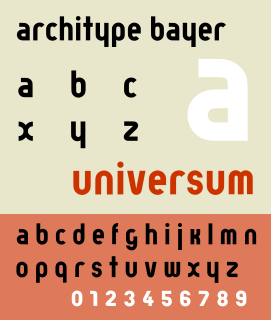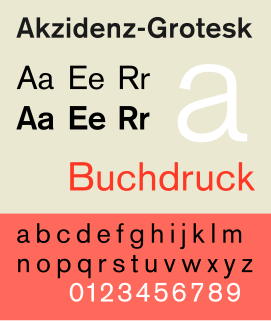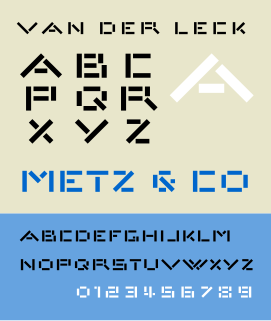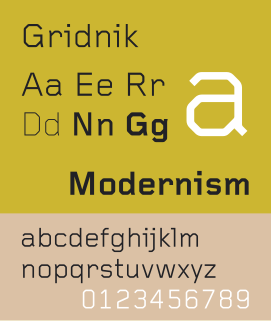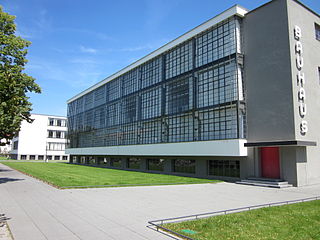 | |
| Category | Sans-serif |
|---|---|
| Classification | Geometric Sans-serif |
| Designer(s) | Freda Sack David Quay Josef Albers |
| Foundry | The Foundry |
| Date created | 1926–1931 |
| Date released | 1997 |
Architype Albers is a modular stencil sans-serif typeface based upon a series of experiments between 1926 and 1931 by Josef Albers, German designer, educator and typographer, (1888–1976). The Architype Albers typeface is one of a collection of several revivals of early twentieth century typographic experimentation designed by Freda Sack and David Quay of The Foundry.

In typography and lettering, a sans-serif, sans serif, gothic, or simply sans letterform is one that does not have extending features called "serifs" at the end of strokes. Sans-serif fonts tend to have less line width variation than serif fonts. In most print, they are often used for headings rather than for body text. They are often used to convey simplicity and modernity or minimalism.

In typography, a typeface is a set of one or more fonts each composed of glyphs that share common design features. Each font of a typeface has a specific weight, style, condensation, width, slant, italicization, ornamentation, and designer or foundry. For example, "ITC Garamond Bold Condensed Italic" means the bold, condensed-width, italic version of ITC Garamond. It is a different font from "ITC Garamond Condensed Italic" and "ITC Garamond Bold Condensed", but all are fonts within the same typeface, "ITC Garamond". ITC Garamond is a different typeface from "Adobe Garamond" or "Monotype Garamond". There are thousands of different typefaces in existence, with new ones being developed constantly.

Josef Albers was a German-born American artist and educator whose work, both in Europe and in the United States, formed the basis of modern art education programs of the twentieth century.
Contents
Albers studied art in Berlin, Essen, Germany, and Munich before enrolling as a student at the Weimar Bauhaus in 1920. He began teaching in the preliminary course of the Department of Design in 1922, and was promoted to professor in 1925, the year the Bauhaus moved to Dessau. He taught there until the school was closed by the Nazis in 1933.

The Staatliches Bauhaus, commonly known as the Bauhaus, was a German art school operational from 1919 to 1933 that combined crafts and the fine arts, and was famous for the approach to design that it publicized and taught.
Albers designed a series of stencil faces while teaching at the Dessau Bauhaus. The typeface is based on a limited palette of geometric forms combined in a size ratio of 1:3. Drawn on a grid, the elements of square, triangle, and circle combine to form letters with an economy of form. Never intended for text, the face was designed for use on posters and in large-scale signs.
